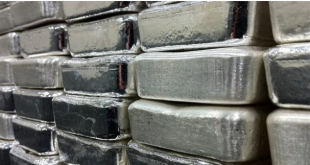UniBe Discussion Paper 22-12, October 2022. PDF. We analyze retail central bank digital currency (CBDC) in a two-tier monetary system with bank deposit market power and externalities from liquidity transformation. Resource costs of liquidity provision determine the optimal monetary architecture and modified Friedman (1969) rules the optimal monetary policy. Optimal interest rates on reserves and CBDC differ. A calibration for the U.S. suggests a weak case for CBDC in the baseline but a...
Read More »“Die Nationalbank ist an vielen Fronten gefordert (Challenges for the Swiss National Bank),” NZZ, 2021
NZZ, August 10, 2021. PDF (title changed by NZZ). Should the SNB follow the Fed and the ECB and rework its strategy? There is a case for rethinking the broad inflation target, the monetary policy concept, and the communication strategy. Equally important is a strategy review outside of the SNB: The SNB cannot and must not decide about the framework within which it operates. Conclusion: Daher ist eine Strategieüberprüfung inner- und ausserhalb der SNB sinnvoll....
Read More »“Die Nationalbank ist an vielen Fronten gefordert (Challenges for the Swiss National Bank),” NZZ, 2021
NZZ, August 10, 2021. PDF (title changed by NZZ). Should the SNB follow the Fed and the ECB and rework its strategy? There is a case for rethinking the broad inflation target, the monetary policy concept, and the communication strategy. Equally important is a strategy review outside of the SNB: The SNB cannot and must not decide about the framework within which it operates. Conclusion: Daher ist eine Strategieüberprüfung inner- und ausserhalb der SNB sinnvoll. Geldpolitisch...
Read More »“Staatsschulden sind keineswegs kostenlos (Free Government Debt?),” NZZ, 2021
NZZ, February 1, 2021. PDF. (Title changed by NZZ.) Do negative interest rates render government debt costless? No. What about r<g? I discuss Olivier Blanchard’s presidential address and the conclusions that columnists have drawn. For background: See this post.
Read More »Discussion of Benigno, Schilling and Uhlig’s (2020) “Cryptocurrencies, Currency Competition, and the Impossible Trinity,” 2020, Bank of Canada
Discussion at the 2020 Bank of Canada Annual Economic Conference: The Future of Money and Payments: Implications for Central Banking. PDF.
Read More »Is Now a Good Time to Buy Gold? Market Report 16 March
We got hate mail after publishing Silver Backwardation Returns. It seems that someone thought backwardation means silver is a backward idea, or a bad bet. “You are a *&%#! idiot,” cursed he. “Silver is the most underpriced asset on the planet,” he offered as his sole supporting evidence. He doesn’t know that backwardation means scarcity, not that a commodity’s price is too high. Since we wrote that on March 2 (our Reports are always based on the prior Friday’s...
Read More »Debt, Deficits, and MMT
One of the American Economic Association sessions in this year’s ASSA Meetings focused on “Modern Monetary Theory” (MMT) and (maybe somewhat unfairly in the same session) on last year’s presidential address by Olivier Blanchard, which suggested that persistently low interest rates on public debt render government budget constraints non-binding. Greg Mankiw concluded in his paper that “MMT contains some kernels of truth, but its most novel policy prescriptions do not follow cogently from...
Read More »Interest Rates Since 1310
Figure III in Paul Schmelzing (2019), Eight Centuries of Global Real Interest Rates, R-G, and the ‘Suprasecular’ Decline, 1311–2018. SSRN.
Read More »Money and Prices Are a Dynamic System, Report 1 Dec
The basic idea behind the Quantity Theory of Money could be stated as: too much money supply is chasing too little goods supply, so prices rise. We have debunked this from several angles. For example, we can use a technique that every first year student in physics is expected to know. Dimensional analysis looks at the units on both sides of an equation. Money supply is a quantity, a stocks, i.e. dollars or tons in the gold standard. Goods supply is a quantity per...
Read More »Raising Rates to Fight Inflation, Report 24 Nov
Physics students study mechanical systems in which pulleys are massless and frictionless. Economics students study monetary systems in which rising prices are everywhere and always caused by rising quantity of currency. There is a similarity between this pair of assumptions. Both are facile. They oversimplify reality, and if one is not careful they can lead to spectacularly wrong conclusions. And there are two key differences. One, in physics, students know that...
Read More » Swiss Economicblogs.org
Swiss Economicblogs.org



